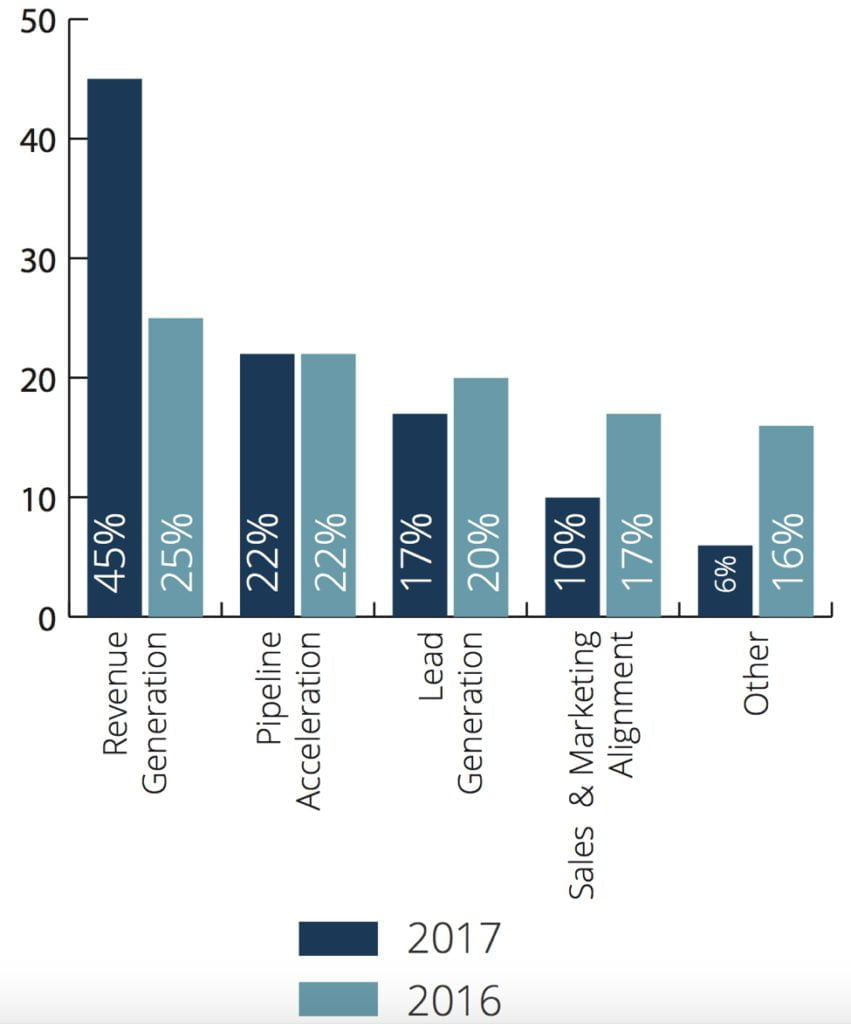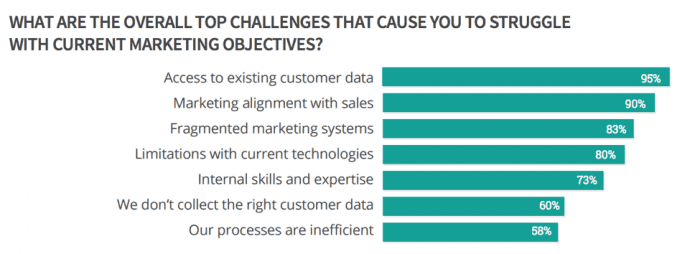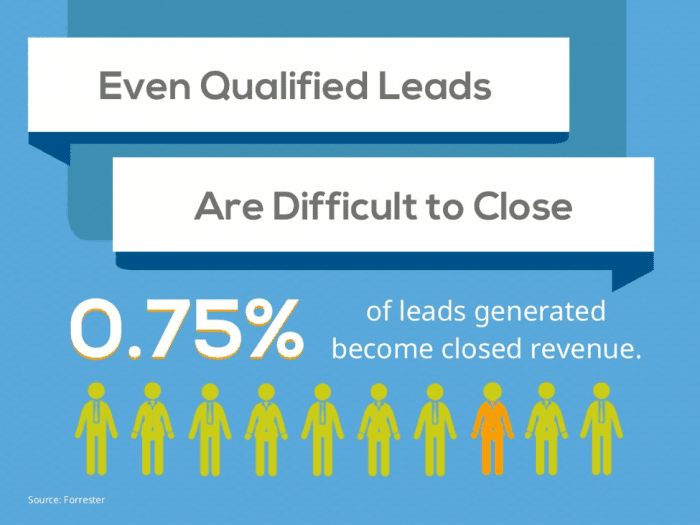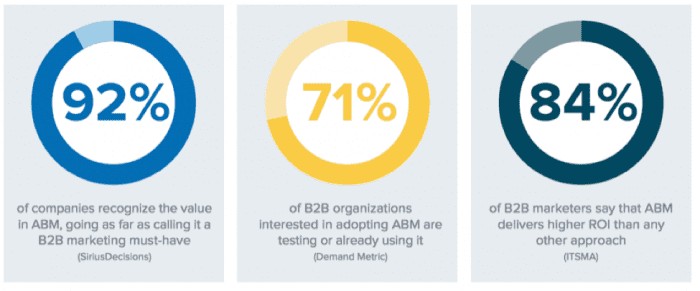10 CEOs share sales and marketing alignment tips through Account-Based Marketing
Sales and marketing alignment is one of the secrets to the success of any business. According to a recent study published by Celsius International, companies with sales and marketing teams that are aligned with each other have a 67% success rate in closing sales. Additionally, having an aligned sales and marketing team can help your business generate revenue 32% times faster than those that don’t have an alignment.
Despite the fact that companies recognize the need for sales and marketing alignment, the reality is that a lot of B2B companies struggle with this. In fact, 90% of B2B marketers admitted that aligning with the company’s sales team is one of the main reasons why they are not able to reach their goals.
Sales share the same sentiment. According to a study done by Terminus, less than 1% of the qualified leads that marketers pass to them are those that they can convert into paying customers. As a result, B2B businesses lose at least 10% of their potential annual revenue.
Source: Terminus
Amidst the finger-pointing, one thing is clear: the cause of lack of sales and marketing alignment arise because these two teams are on different pages. Marketing focuses on building relationships with potential clients while sales concentrate on getting the accounts.
That said, if your business is struggling because of sales and marketing misalignment, the solution is to get these two teams on the same page by sharing a common goal, which is generating revenue.
This is where account-based marketing comes in to help.
What is account-based marketing?
Account-based marketing (ABM) has experienced a stellar revival. According to the 2017 State of Account-Based Marketing Survey, 81% of B2B marketers said that they are currently using ABM. This is a stark contrast from the 49% of B2B marketers just the year before.
So what is account-based marketing?
Smart Insights defines account-based marketing as “a strategic approach that coordinates personalized sales and marketing efforts to target specific accounts for new businesses and create deeper and broader relationships with existing customers.”
ABM seems to be a new marketing buzzword, but it is not. On the contrary, it has long been used by B2B companies, primarily by those that market to organizations where multiple stakeholders are involved in the buying decision process. ABM helps B2B businesses connect with all the stakeholders within an organization, allowing you to address their needs and increase your ability to make a sale.
With an increase in B2B sales teams focusing more on critical accounts to bring in revenue, and the advent of new automation tools, more and more businesses are now utilizing different techniques to create and implement an ABM strategy, including startups and small business owners.
Benefits of using account-based marketing
Regardless of size, the majority of B2B companies today have either started using ABM or are seriously considering it. Those that have already started using it highly recommend it, calling it a ‘must-have’ for any B2B business:
Here are some of the reasons why:
Increased sales and marketing alignment
One of the enormous benefits Account-based marketing offers is the ability to provide your business with a more strategic and cohesive sales and marketing alignment. That’s because ABM requires both your sales and marketing teams to work closely together from identifying target accounts to developing communication and outreach strategies, and agreeing on the metrics to use to measure the effectiveness of their campaigns.
Synchronized metrics to increase revenue
According to a report published by TrackMaven, 40% of sales and marketing professionals say that one of the top challenges they face is that they use different metrics, especially when it comes to ROI.
The differences between can make evaluating the effectiveness of a campaign extremely difficult, especially when it comes to tracking your ROI. Since every single campaign you launch involves a great deal of time an effort, it’s crucial that you see whether or not you’re getting an ROI on them.
Majority of those that use account-based marketing list generating revenue as their top priority.
Both teams need to create a definite set of metrics that gear towards achieving sales and marketing alignment. This, in turn, keeps one team accountable to the other to ensure that each of their unique needs to meet this goal. This is why, according to Celsius International, businesses that use ABM generate 208% more revenue for their marketing efforts compared to companies that don’t implement ABM.
More personalized communication
Although inbound marketing creates content based on your business’ buyer persona, ABM takes this personalization to a whole new level by narrowing down the focus even further by developing content and strategies centering on the needs and wants of key decision-makers to help move them further down the buyer’s journey.
Sales and marketing alignment tips using ABM
No doubt, account-based marketing significantly helps you align your sales and marketing teams. The question is, how to do it?
We have asked ten top CEOs on to share their best tips for using ABM to help you align your team
1. Encourage transparency during team meetings
“Transparency has become another industry buzzword you hear everywhere. Yet, there are just a few companies and their leaders that actually practice transparency. This lack of transparency results in a global epidemic of mistrust. Share the good, the bad and the ugly. Also, don’t keep that information until the annual company anniversary or another event where you are forced to make a speech. You can host bi-weekly team lunches, publicly share your revenues and other financial data, send a weekly/monthly corporate newsletter to your team informed of the wins and the odds.”
– Ariel Chiu, CEO of Wonderstruck Events
2. Have an organized system in place
“In the heady rush to adopt new clients, every new one got their customized schedule. My team members had to be briefed on each account as they were brought in to handle specific projects. This naturally caused delays, communication breakdowns, and frustration.
I solved this by adding a lot more structure to our system. This began with establishing a weekly work period (based on our company time zone) and a process that accounts for the lifespan of every assignment. We decided to organize ourselves based on something called “Scrum,” a method that was initially designed for teams managing software. Like software management teams, what we do is best broken into small, specialized tasks that fit into larger goals.
Our work week ends with a meeting attended by everyone. At this meeting, we take the time to go through all the tasks that were assigned for the week and discuss them.”
– Adam Steele, CEO of Loganix
3. Personalize your content
“One of the challenges of marketing nowadays is avoiding making potential consumers feel like you are spamming them. This is where you need to tailor your content to the needs and wants of your target audience: some of this can be done by trial and error because you’ll gain a better understanding of these needs and wants over time.”
– Aaron Haynes, Founder of Fenix Pro
4. Fine tune your articles and blog posts
“Our attention spans have gotten much shorter over time. According to a survey by Microsoft, the average attention span has fallen to eight seconds, down from 12 seconds in the year 2000. This is a shorter span than a goldfish, so remember this next time you are writing content.
You have mere seconds to grab the attention of your website visitors, so it’s crucial that you include your most valuable pieces of information in your first paragraph. When you address the Who, What, When, Where, Why and How at the very beginning, you increase the odds of that visitor converting, even if they don’t consume the entire piece of content.
When done right, that information-packed first paragraph can satisfy the reader enough that they convert on an exit-offer or immediately jump to your call-to-action.”
– Michael Tario, Founder, Tario & Associates
5. Use success stories and case studies
“Including a client’s success story in your marketing can send you referrals two ways. First, the client will typically share the marketing piece on social media, introducing your company to his or her friends and family. This can send highly qualified leads, in a sense, they are already comfortable with your business because of the close connection. Second, success stories show that your company is good at what you do. In our case, someone might see our marketing and refer a friend to use that is in need of a real estate agent.
Featuring clients and sharing your company’s success shows that your service solves the problems a potential new client is facing. You can attract reputation-based referrals from people you don’t even know if the marketing featuring previous clients is done right.”
– Steve Kappel, President of Coldwell Banker Kappel Gateway Realty
6. Gather data from your email list
“If you have been building an email list since day one, which every business should, then you can pool your subscriber list to see what they are interested in reading about. This can be your most valuable source of content ideas, as these are the people that are most likely to purchase your product or service soon. You can send out a simple, “What are you interested in reading about?” email, or use a survey app that integrates with your email provider. This strategy helps you create content that your buyers will engage with, which can then lead to additional purchase conversions down the line, increasing the lifetime value of each customer.”
– Matthew Willens, Founder of Willens Law Offices
7. Choose distribution channels wisely
“Rather than spreading your marketing budget thin across several advertising channels, in the beginning, pick the one or two of the most active options, and dedicate the majority of your budget and time mastering those.
Paid advertising like Facebook ads and Google AdWords allows you to see precisely how much ROI you are generating. When you are dealing with measurable results, you can then scale your efforts and experience serious growth. Then, as your revenue grows, so can the number of different marketing channels you use.”
– John Morgan, CEO of Stillwater Dwellings
8. Maximize your Facebook ads
“You could have the best product or offer the best service, but if your target customers don’t know you exist, you will never survive. There are multiple ways to place your offer in front of your ideal customer with paid ads offering an instant solution
Facebook ads allow small business owners to place a particular offer in front of a highly-targeted audience. Facebook’s massive user base combined with their extensive targeting options makes it possible to start attracting customers and generating sales on day one.”
– Scott Grossman, Managing Partner of The Grossman Law Firm, LLC
9. Don’t forget Google AdWords
“If your ad is enticing and clever, you might receive a click or engagement — and if your offer is irresistible, you will see conversions. Now, a Google AdWords campaign allows you to place your ad directly in front of users that want your service or product. AdWords allows us to target potential clients that are looking to speak to a local lawyer immediately. With proper keyword selection and ad copy that offers a solution to their problem, we can generate leads that convert at a high rate.”
– Todd Tinker, Founder of The Tinker Law Firm
10. Evaluate campaigns against set metrics
“You will never run a successful social media marketing campaign if you don’t measure your results. It’s vital that you lay out clear goals with benchmarks that allow you to determine whether or not your social effort is paying off. The data you collect and analyze can then be used to make changes to your campaign. You must be willing to continually optimize and test your efforts if you want to develop a truly successful campaign.
Points like thorough website traffic stats and conversion analytics permit you see whether the Search Engine Optimization efforts are repaying. When you take a look at this information over a period, there much be a steady upward climb.
It doesn’t matter if you are working with a $10 daily social media budget or six figures. The objective is the same — put your message in front of the correct audience and trigger engagement. To do that, you need to track and measure everything.”
– Eric Ritter, Founder & CEO of Digital Neighbor
When applied correctly, account-based marketing does more than efficiently create a cohesive sales and marketing alignment. This tried-and-tested marketing strategy can help you streamline your sales cycle and boost your revenue.
This, of course, is just the tip of the iceberg. If you want to learn more about implementing ABM for your business, we have created a definitive guide to account-based marketing and sales alignment. Here, we go more in-depth on the steps of planning and executing a well-developed account-based marketing strategy.






